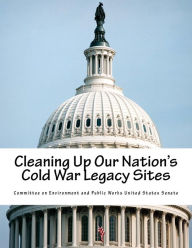Cleaning Up Our Nation's Cold War Legacy Sites Committee on Environment and
by Public Work
2020-08-29 23:33:16
Cleaning Up Our Nation's Cold War Legacy Sites Committee on Environment and
by Public Work
2020-08-29 23:33:16
The state of Wyoming is proud of the role that it played in deterring the threat that the former Soviet Union posed. This involved the development and deployment of Atlas nuclear missiles during the early days of the cold war. These missile sites wer...
Read more
The state of Wyoming is proud of the role that it played in deterring the threat that the former Soviet Union posed. This involved the development and deployment of Atlas nuclear missiles during the early days of the cold war. These missile sites were on high alert during the Cuban Missile Crisis. Our servicemen maintained these sites by using vast amounts of trichloroethylene, TCE, to clean rocket fuel lines. These soldiers had no idea that decades later that practice would create a serious negative environmental legacy. Today there is groundwater contamination from the TCE. Seven of these Atlas Missile sites are around the city of Cheyenne area, and they have varying degrees of groundwater contamination. According to the Wyoming Department of Environmental Quality, Atlas Site 4's TCE concentrations in the groundwater exceed 240,000 parts per billion, well above a safe drinking limit of 5 parts per billion. The Atlas site plume of TCE is around 12 miles long and 3 miles wide. According to the Wyoming Department of Environmental Quality, it is one of, if not the largest TCE plume in all of the country. The Army Corps of Engineeers has since constructed a water treatment plant that ensures that Cheyenne's water is clean and safe, and has provided granulated activated carbon systems for private landowners who use well water. Wyoming isn't the only State that has cold war legacy environmental problems. Many States, especially in the West, have quite a few sites associated with the cold war. The Department of Defense, though, has an obligation to leave States like Wyoming whole; to not only provide for our nation's safety, but also to restore the environment of the communities.
Less






















 From Colorado.png)
 of the Southern Rocky Mountain Region.png)


 in Northeastern Kansas.jpg)



